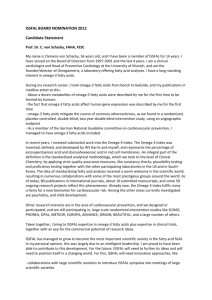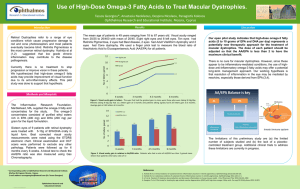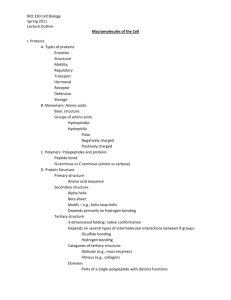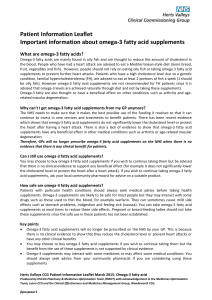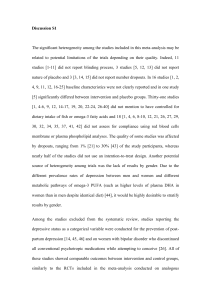Microsoft Word
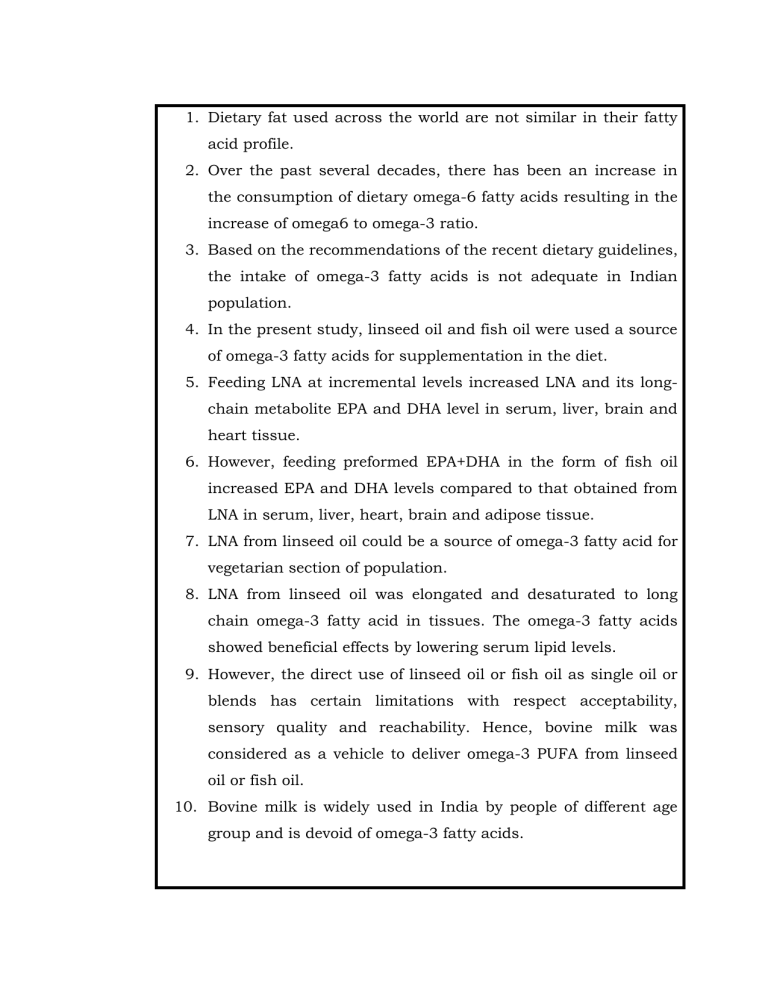
1.
Dietary fat used across the world are not similar in their fatty acid profile.
2.
Over the past several decades, there has been an increase in the consumption of dietary omega-6 fatty acids resulting in the increase of omega6 to omega-3 ratio.
3.
Based on the recommendations of the recent dietary guidelines, the intake of omega-3 fatty acids is not adequate in Indian population.
4.
In the present study, linseed oil and fish oil were used a source of omega-3 fatty acids for supplementation in the diet.
5.
Feeding LNA at incremental levels increased LNA and its longchain metabolite EPA and DHA level in serum, liver, brain and heart tissue.
6.
However, feeding preformed EPA+DHA in the form of fish oil increased EPA and DHA levels compared to that obtained from
LNA in serum, liver, heart, brain and adipose tissue.
7.
LNA from linseed oil could be a source of omega-3 fatty acid for vegetarian section of population.
8.
LNA from linseed oil was elongated and desaturated to long chain omega-3 fatty acid in tissues. The omega-3 fatty acids showed beneficial effects by lowering serum lipid levels.
9.
However, the direct use of linseed oil or fish oil as single oil or blends has certain limitations with respect acceptability, sensory quality and reachability. Hence, bovine milk was considered as a vehicle to deliver omega-3 PUFA from linseed oil or fish oil.
10.
Bovine milk is widely used in India by people of different age group and is devoid of omega-3 fatty acids.
11.
Milk was supplemented with omega-3 fatty acid containing oils and subjected to spray drying.
12.
The total carbohydrate, crude protein and total fat content in spray-dried milk supplemented with LSO or FO was found to be approximately 58, 16 and 16% respectively.
13.
The spray-dried milk supplemented with omega-3 fatty acids was found to be shelf stable for 6 months and acceptable with respect to sensory and physical properties.
14.
Nutritional evaluation of spray-dried milk supplemented with omega-3 fatty acids indicated an efficient delivery of omega-3 fatty acids to serum and tissues.
15.
Spray-dried milk supplemented with omega-3 fatty acids lowered the serum and liver lipids level that have a bearing on cardiovascular function.
16.
Feeding rats with spray-dried milk containing omega-3 fatty acids significantly influenced the cholesterol biosynthesis and excretory mechanism.
17.
The activity of HMG CoA reductase in liver microsomes of rats fed LNA or EPA+DHA containing formulation was significantly lowered compared to control rats fed formulation devoid of omega-3 fatty acid.
18.
The excretion of cholesterol and its metabolite through bile are significantly enhanced in rats fed formulations containing omega- fatty acids compared to control.
19.
The lipid peroxides level in liver homogenate and also in platelets were increased in rats fed spray-dried milk supplemented with omega-3 fatty acids compared to control.
20.
However, the activities of antioxidant enzymes like catalase and glutathione transferase are increased in experimental animals.
21.
The serum prostaglandins (TXB
2
) and 6-keto PGF
1
α level were decreased in rats fed omega-3 fatty acid containing formulation compared to control.
22.
The platelet aggregation induced by ADP and collagen was decreased in rats fed omega-3 fatty acid containing formulations compared to those fed formulation devoid of omega-3 fatty acids.
23.
These studies indicated that it is possible to deliver adequate amounts of omega-3 fatty acids from vegetable oil (linseed oil) or fish oil through spray-dried milk powder and increase the daily intake of omega-3 fatty acids. This also beneficially altered serum and tissue lipids having a bearing on cardiovascular function.
